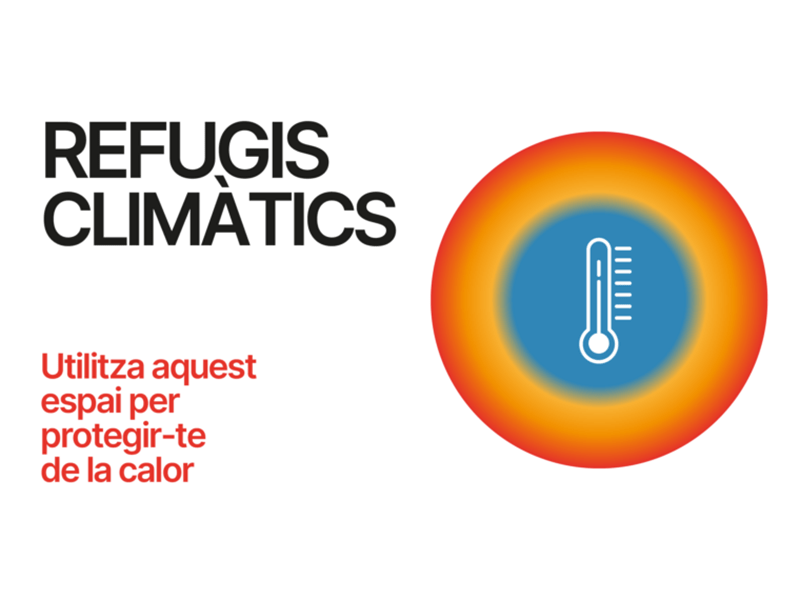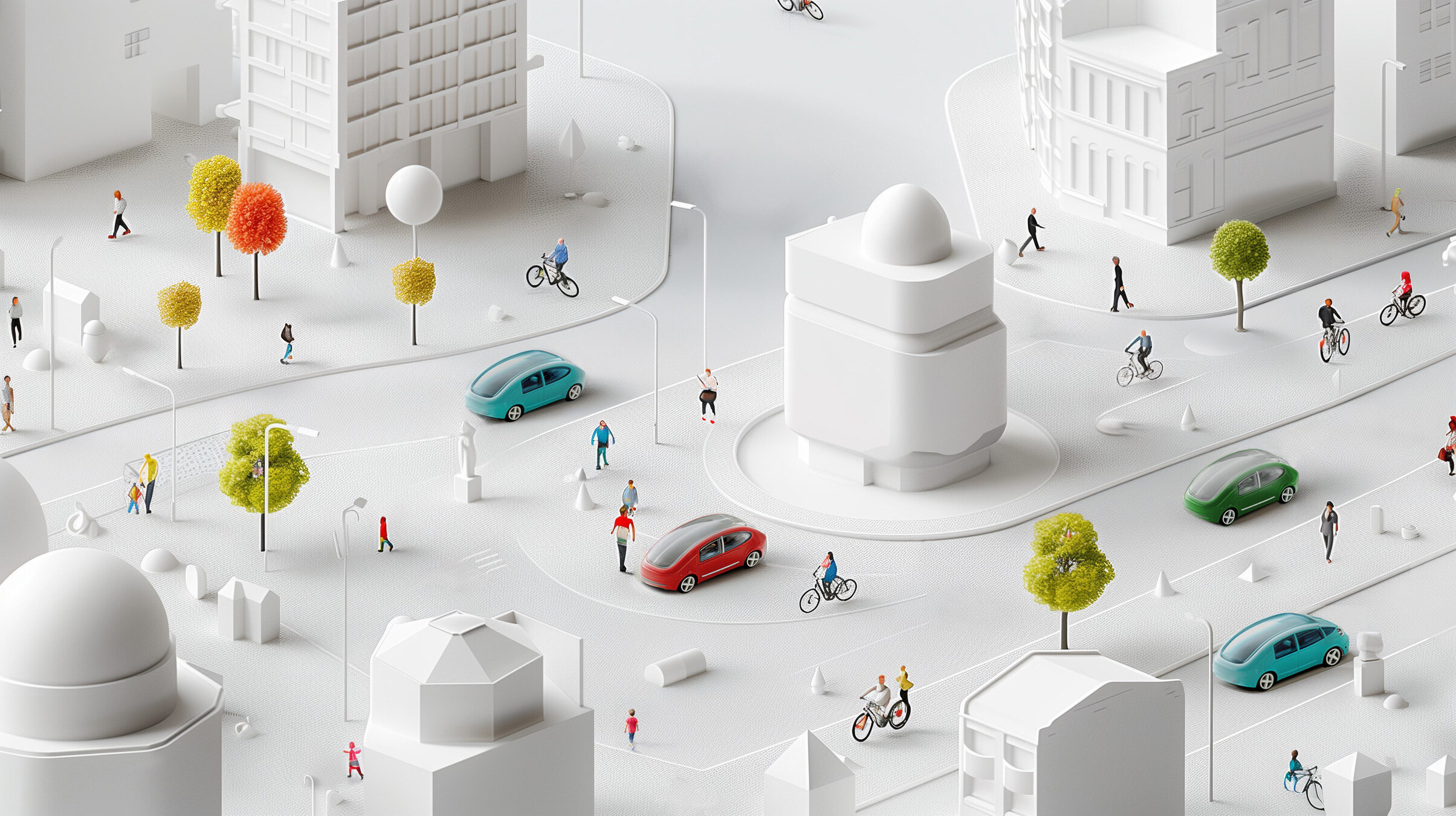The UNICO-GDU-HPC project, part of the UNICO I+D Cloud programme, has the Ministry for Digital Transformation and of Civil Service and the EU-Next Generation EU as financing entities, within the framework of the PRTR and the MRR.
This project is part of the Proximity City Living Lab, within the framework of the vCity project.







Serena Mombelli
Visiting researcher
Research group in mobility, transport, and territory (GEMOTT)
Autonomous University of Barcelona
Patricio Reyes
Senior researcher
vCity lead, head of Urban Data Science research line
Data Analytics and Visualization Group, BSC


Are Barcelona climate shelters accessible to heat-vulnerable populations?







What are climate shelters?
Climate shelters are public spaces designed to provide protection from extreme temperatures. Barcelona has more than 360 summer shelters, located in indoor spaces such as schools and libraries, or in outdoor spaces such as parks and gardens.
All are free of charge, with the exception of the municipal swimming pools, which have fixed public prices and subsidies. In addition to temperature control, all shelters have seating and fresh water, and some organise activities.
Municipal data shows that 98% of residents have a shelter within a 10-minute walk. But do high-risk groups have adequate access to shelters during heatwaves?


According to the Lancet Countdown Europe report (2024), during extreme weather events, children and the elderly are considered to be among the most vulnerable populations. We mapped the distribution of these groups in Barcelona.
Who are the vulnerable population groups and where are they?
For each square in the map, we coloured the estimated vulnerable population living there1, from less than 20, between 20 and 60, and more than 60 vulnerable residents.
[1]: The vulnerable population is divided into three quantiles, with each quantile representing approximately 33% of the population. Each group is depicted by a different color

Are vulnerable populations
populations covered by the climate shelters?

Mapping climate shelters accessibility for vulnerable populations in Barcelona
Using official data from the Barcelona City Council, we identified the locations of climate shelters, which are marked by dots on the map, and calculated the coverage areas.
We estimate that more than 90% of the most vulnerable residents1 can reach a climate shelter within a 10-minute walk2. Out of the 373,000 vulnerable residents with access to climate shelters, 321,000 are older adults, and 52,900 are children under the age of four.
Conversely, among the 35,000 vulnerable residents for which the nearest climate shelter is within more than a 10-minute walk, 30,100 are adults over 65, and 4,960 are young children.
[2]: The 10-minute walk coverage considers an average speed of 3.28 Km/h for older adults and children.
[1]: Children under four and adults over 65 years old.

At a first glance, climate shelter coverage for vulnerable population in Barcelona is good.
Let's dig into the data to identify how to improve accessibility.

We compared the service coverage across Barcelona's districts.
All districts cover more than 75% of their vulnerable residents.
In particular, in Ciutat Vella, 100% of the most vulnerable population have a climate shelter within a 10-minute walk.
How does climate shelters accessibility vary by district?

How is climate shelters coverage affected in August?
In August, climate shelter coverage continues to support 75% of vulnerable residents.

Despite some existing gaps, Barcelona's climate shelter coverage at 10-minute walking distance is adequate. The City Council aims to improve this by ensuring that all residents can reach a shelter within 5 minutes by 2030. The target demonstrates a commitment to equitable access, although addressing current gaps and enhancing overall accessibility remains a challenging task.
To ensure a good service of the network, challenges such as extending operating hours, diversifying shelter types, and managing capacity must also be addressed.
As seen on the analysis, understanding people's needs is key. In this case, how are the most vulnerable people distributed? Thanks to the collaboration between Barcelona City Council and vCity, we are analysing socio-demographic data to understand it.
Through vCity’s development of urban digital twins, we aim to help urban policy-making and model human-centric solutions for planning challenges.
How can climate shelters accessibility improve?

Let's collaborate
Benefits
- Be part of the vCity network
- Get support from our Urban Data Science research line from Barcelona Supercomputing Center (BSC)
- Co-create and test the Living Labs.
- Workshops (for urban planners, urban policy-makers)
- Priority access to code and solutions
Requirements and role...
- The city plays a key role
- by providing the local knowledge (through urban planners, policy-makers, project managers)
- access to data sources
Agreement
- Memorandum of Understanding (MoU) if needed (2-3 months)

The UNICO-GDU-HPC project, part of the UNICO I+D Cloud programme, has the Ministry for Digital Transformation and of Civil Service and the EU-Next Generation EU as financing entities, within the framework of the PRTR and the MRR.
Let's get in touch
This project is part of the Proximity City Living Lab, within the framework of the vCity project.







Collaborators and vCity team:
- Serena Mombelli, visiting researcher; research group in mobility, transport, and territory (GEMOTT), Autonomous University of Barcelona
- Patricio Reyes, senior researcher; vCity lead; head of Urban Data Science, DataViz
- Àlex Capilla, data scientist; vCity visitor
- Roger Gonzàlez, data scientist; vCity
- Sol Bucalo, senior data visualization designer; vCity apps and interface
- David García, software developer; vCity apps and interface
- Paula Fernández, graphic communicator; vCity content and communications
- Paula Benito, interactive web mapping; vCity
- Fernando Cucchietti, senior researcher; vCity management; head of DataViz
- Alba Alonso, CARTO advisor; and all the CARTO team
- BSC Data Analytics and Visualization Group
- Barcelona Supercomputing Center (BSC)
- All the beta-testers

Climate Shelters_Presentation
By vcity
Climate Shelters_Presentation
Presentation Barcelona climate shelters for ISCN Global Mixer
- 148

